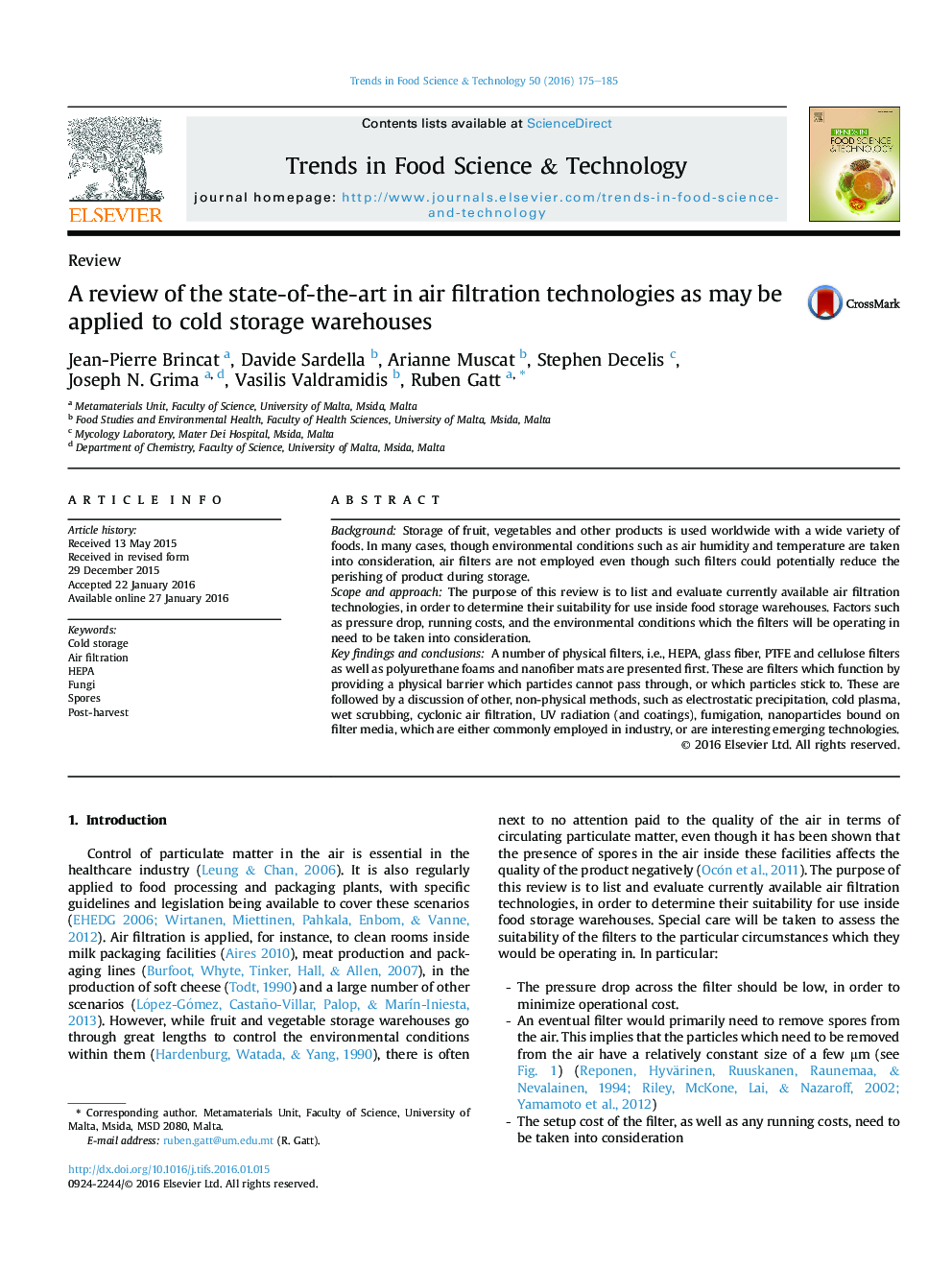| Article ID | Journal | Published Year | Pages | File Type |
|---|---|---|---|---|
| 2098458 | Trends in Food Science & Technology | 2016 | 11 Pages |
•Different kinds of air filtration technologies are reviewed.•Physical filters are effective but they provide a medium for fungal growth.•Sterilization methods can be used to counteract this problem with physical filters.•Certain non-physical methods are promising, yet more studies are required.
BackgroundStorage of fruit, vegetables and other products is used worldwide with a wide variety of foods. In many cases, though environmental conditions such as air humidity and temperature are taken into consideration, air filters are not employed even though such filters could potentially reduce the perishing of product during storage.Scope and approachThe purpose of this review is to list and evaluate currently available air filtration technologies, in order to determine their suitability for use inside food storage warehouses. Factors such as pressure drop, running costs, and the environmental conditions which the filters will be operating in need to be taken into consideration.Key findings and conclusionsA number of physical filters, i.e., HEPA, glass fiber, PTFE and cellulose filters as well as polyurethane foams and nanofiber mats are presented first. These are filters which function by providing a physical barrier which particles cannot pass through, or which particles stick to. These are followed by a discussion of other, non-physical methods, such as electrostatic precipitation, cold plasma, wet scrubbing, cyclonic air filtration, UV radiation (and coatings), fumigation, nanoparticles bound on filter media, which are either commonly employed in industry, or are interesting emerging technologies.
